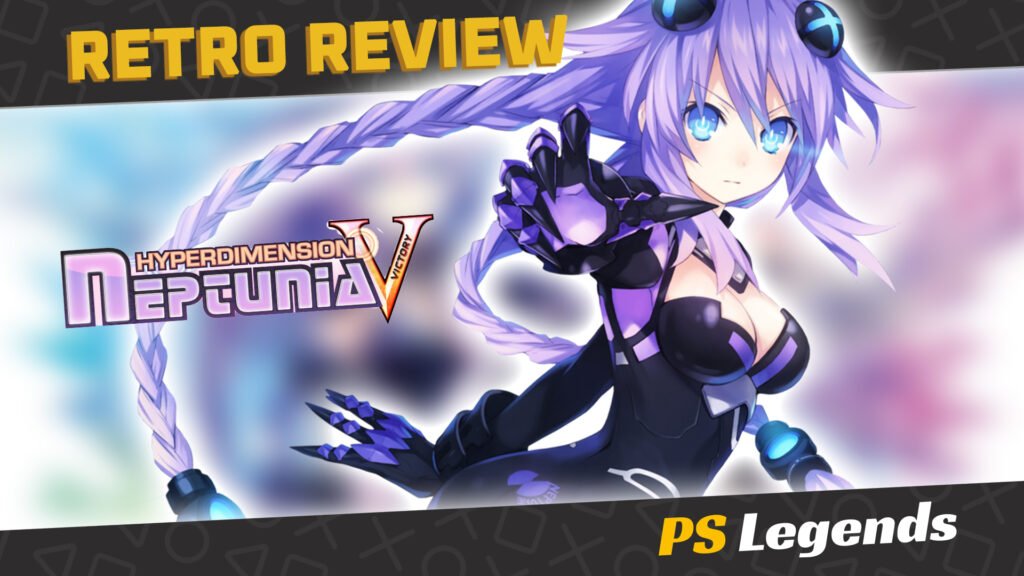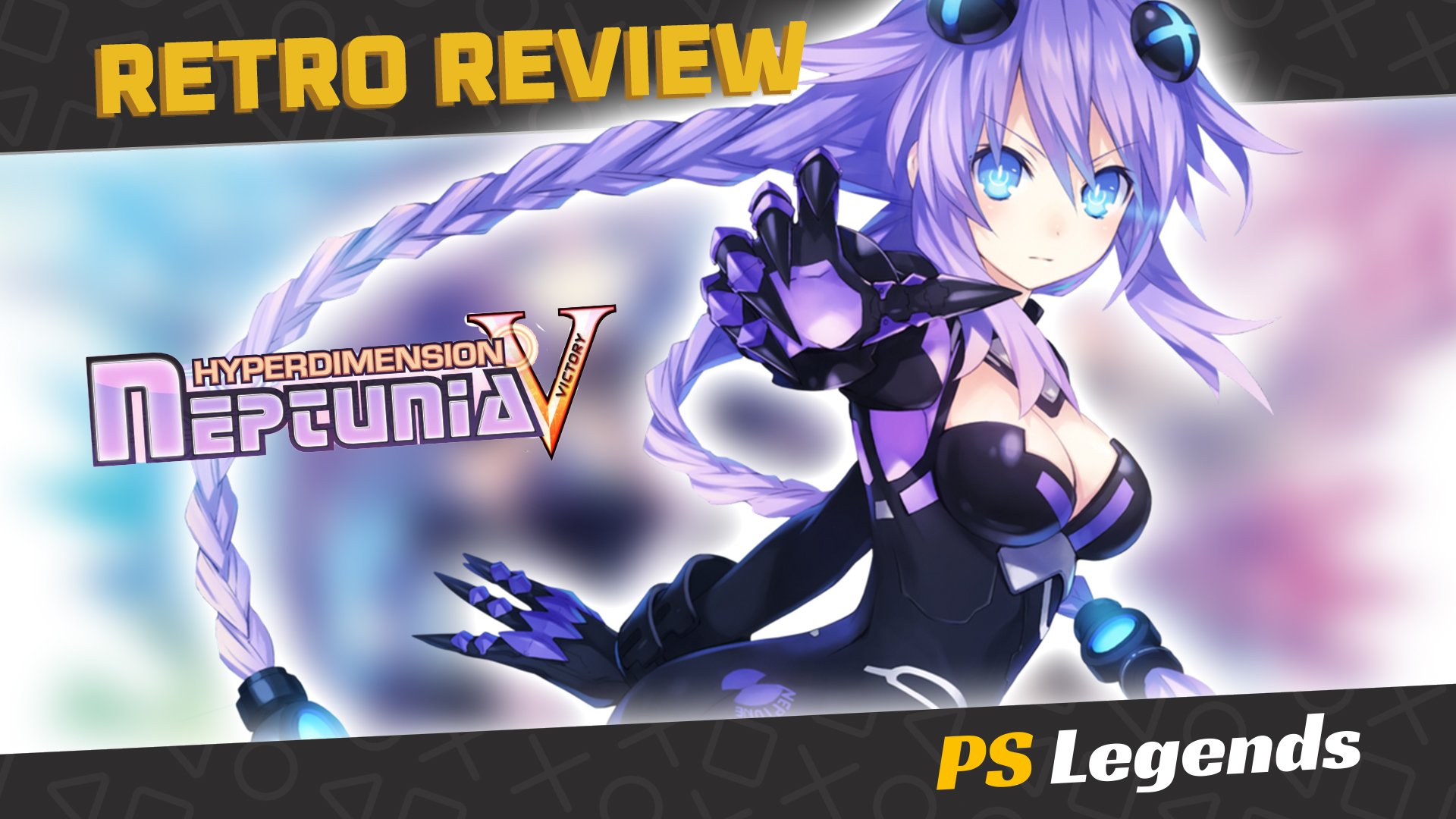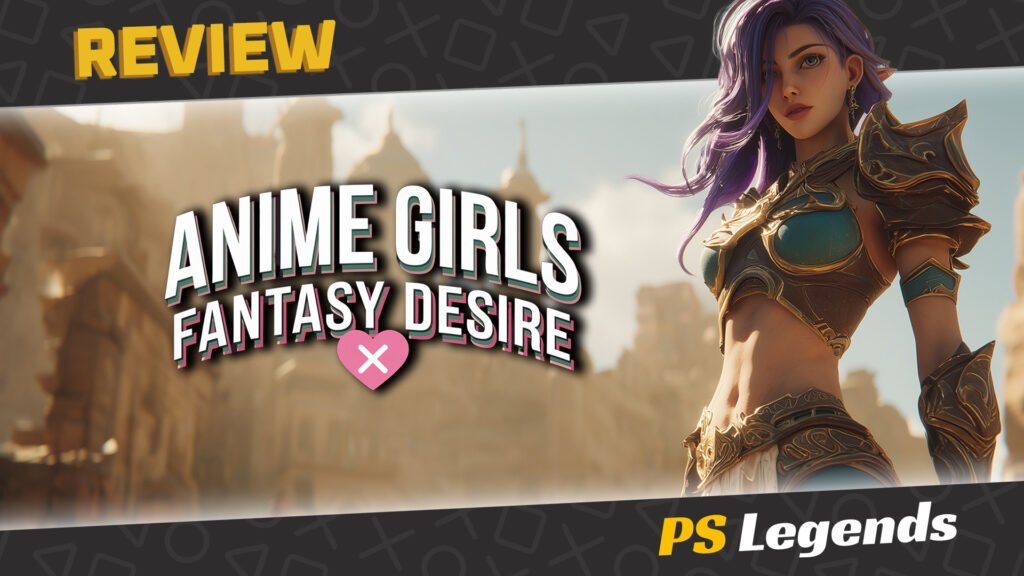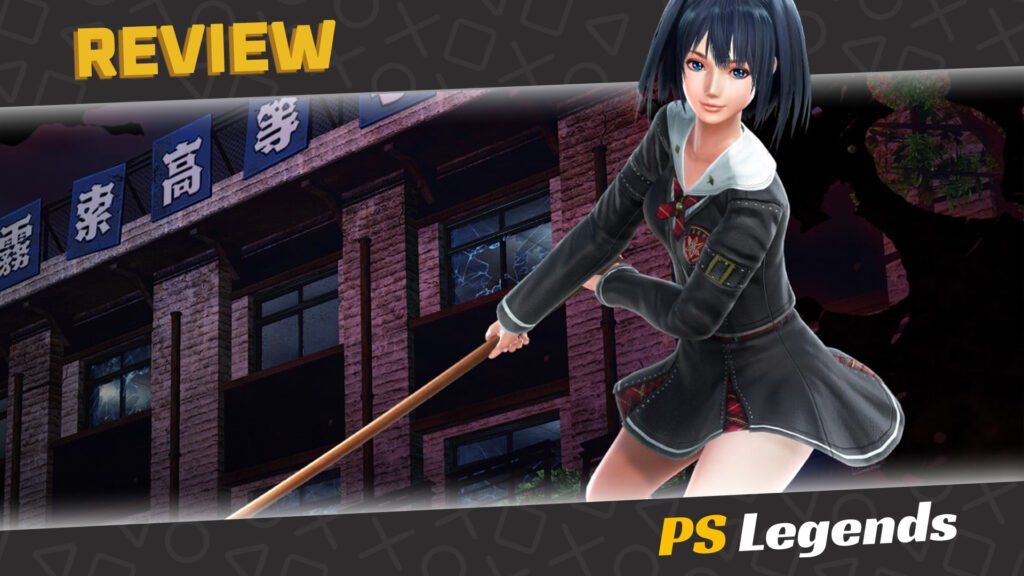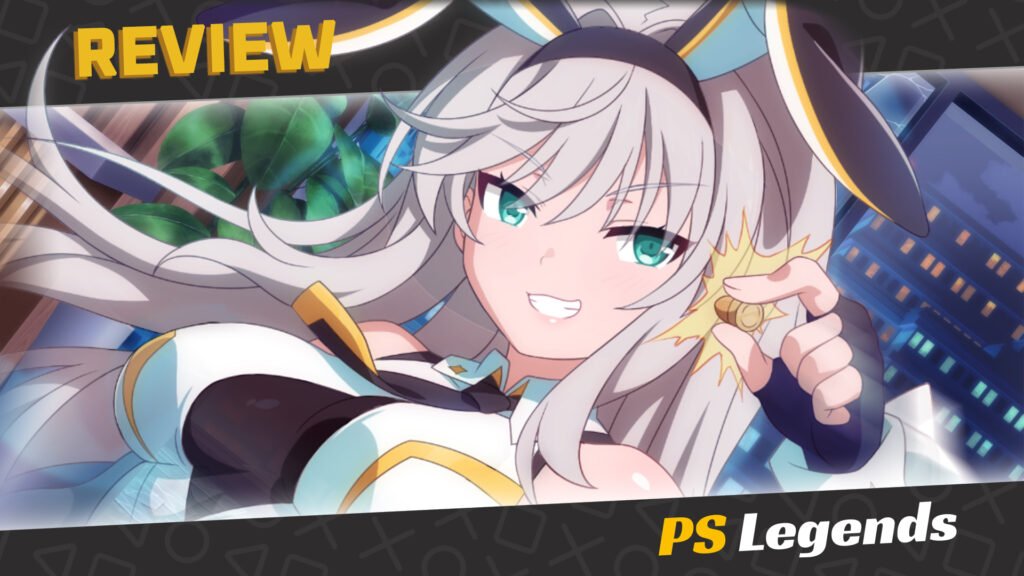The concept for a good sequel is not a complicated thing. You take your original idea and expand on the lore, then you fix anything that was broken the first time around. You might want to introduce some new features too; This is fine so long as you don’t go overboard, and you don’t change the overall flow of the game. Hyperdimension Neptunia Victory ticks all of these boxes, so surely then it should be the perfect package? Well, almost. It really is rather good.
Introduction
Hyperdimension Neptunia Victory is the third installment in one of the most highly praised and yet greatly misunderstood modern JRPG series. It’s a series that embraces everything that’s great about the JRPG genre; the quirky characters, the subtle humour, the sex-appeal, the hugely over-the-top action and, of course, stories composed of many intricate layers. After Hyperdimension Neptunia mk2 rebooted its predecessor’s story in favour of more creative freedom and many new ideas, Victory is the first true sequel in the series, being a proper mk2 follow-up.
Nepgear isn’t the protagonist this time, with Neptune making a much-wanted return, though unlike the original game this isn’t a journey of self-discovery, it’s more of a team effort, with each character making their own contributions to the story and tone. Whilst this gives each character more depth, Neptune sacrifices some dialogue in process, particularly her trademark humour. New secondary character Plutia is a welcome addition though, being an interesting mix of adorable slowpoke and powerful closet-dominatrix.

Story
After the CPUs (or Console Patron Units if you prefer) of the world of Gamindustri (a world based on the real gaming industry) united to prevent the resurrection of Arfoire the Deity of Sin, these immortal goddess-like girls have taken to a life of laziness during peacetime and spend their days playing video games together, much to the frustration of Histoire, the oracle of the nation of Planeptune (which represents Sega). Finally deciding to act, Histoire sends sibling CPUs Neptune and Nepgear to better themselves and their nation by punishing an anti-CPU activist.
The activist, Rei Ryghts, acquires a mysterious power and uses it to send Neptune to another dimension where our heroine finds herself back in the 80s at the beginning of ‘the Console War’ (the plot of the original game) though things are very different in this alternate reality, particularly because she doesn’t even exist here. Neptune befriends Plutia, a lazy, ditzy girl like herself, albeit with a sadistic side, who is the alternate Planeptune’s CPU, as well as future-CPU Noire (who personifies the Sony PlayStation series). Together, the three work to defeat and befriend other new CPUs while uncovering the truth about Rei Ryghts’ power and her criminal group, the Seven Sages.
This is a far more extensive take on the Console War when compared to the events in the original game. The story spans almost three decades, and cleverly shows the successes and failures of each nation, representing these aspects of real game consoles and their manufacturers. You’ll see Lowee’s (Nintendo’s) productivity boom as a result of motion controller development, and Leanbox (Xbox series) entering a temporary recession as a result of the infamous ‘Red Ring of Death’, amongst countless other memorable moments represented as revolutionary politics.

Gameplay
The overall flow of the combat hasn’t changed much since mk2, which is a good thing. You’ll still be controlling a team of up to four characters in turn-based combat. Encounters aren’t random and can be avoided in the field if you so wish, though you’ll miss out on precious experience and the opportunity to charge your characters’ EXE Gauges, which can then be used to unleash devastating special attacks which are essential for bosses. You’ve also got a set of standard special attacks which can inflict handy de-buffs on your enemies, and the option to ‘Transform’ your girls into the series’ trademark scantily-clad goddess modes for an increase in stats and a decrease in clothing.
The battle system as a whole feels more streamlined compared to mk2, yet it’s also notably more challenging. Firstly, Victory does away with the generous way you recovered SP in mk2. The problem was that it was so easy to replenish SP that you could spam SP skills constantly and just about every enemy in the game ends up as fodder for easy levelling. Victory has a more typical form of SP, the same way that most JRPGs use SP or whatever their equivalent is (usually MP) so that you can no longer be as liberal with your special attacks. This is where the new EXE super attacks kick-in, but again, they’re best saved for bosses. Every character you can play as in the game has unique abilities and different reasons to utilise them.
Another important element of battles is the Guard Break. In addition to a HP gauge, all enemies also have a guard gauge. Once this gauge is depleted, a guard break is inflicted and the enemy’s defence is lowered, granting you a brief window to unleash your most powerful attacks without resistance. This is an important element to most boss battles since they usually have massive HP pools and a handful can even regenerate a percentage of health each turn which often keeps you from simply brute forcing them to death. In addition to that, buffs and de-buffs play a key role in some of the more challenging late-game boss battles.
The dungeons are pleasingly short but plentiful compared to most other JRPGs. The enemies are easy enough to avoid and so you can just run past them if you’re just trying to collect items or simply don’t need the EXP at that moment. You can also get a pre-emptive strike by attacking them from behind which is easy enough to do. The game gives you the option to instantly kill weak enemies with these attacks, but they are automatically turned off because you get no experience for doing so.
Navigating the dungeons is pretty straightforward with the exception of a few minor teleporter puzzles here and there. Despite the smaller size of the dungeons, there are also options to modify them and thus get more out of them. By making use of the game’s Scout system, you can alter each dungeon in a variety of different ways. If you don’t feel like doing the side-quests but need to grind levels or farm money, you can simply send scouts to explore until you get an effect that increases the amount of experience or money earned from battles, on top of whatever trinkets they bring home from their travels.
The perks and multitude of bonuses, features, new enemies and potent items and equipment received from Scouting are simply too many to name here, but that might not be such a good thing. It’s such an incredibly deep system which you can lose hours into playing around with, without ever really knowing what you’re doing. Idea Factory is notorious for being incredibly cryptic and not explaining important mechanical details. This can be a nightmare for completionists. Fortunately, this is all optional and best saved for later playthroughs which are better played with a guide to find secret events and specific ending requirements.

Graphics/Sound
Dialogue in general is a minor issue too since the game’s lengthier cutscenes aren’t voiced. Whilst scenes linked to side-quests aren’t usually voiced in the series, the fact that a few major story-related scenes are missing the game’s top-quality voice acting hasn’t gone unnoticed and feels like a lazy effort. It’s a shame when you have such extraordinary talent providing the voiceovers. The music is catchy enough to suit the mood but doesn’t quite top mk2’s epic theme song.
The series has never looked better, with the low-resolution cel-shaded character models of mk2 being stripped out in favour of fully 3D versions with smooth textures while still respecting their anime origins. There are one or two copy-pasted levels from mk2, though these have likely been added ironically since copy-pasting is a theme that Victory frequently mocks. Special attacks flow beautifully and colourfully, which is vital given their increased presence and value this time. There’s certainly no questioning that this game belongs on the PS3.

Replayability
Neptunia Victory will keep you busy for quite some time, but there’s also the New Game + feature, the bonus arena boss fights and some free DLC battles to keep you coming back for more. Alternative endings, ‘Lily Rank’ relationship building, and treasure hunting could also bring the hardcore enthusiasts back again, all of which have hard-earned trophies attached but as is usually the case with the series, only the most dedicated of trophy hunters need apply.
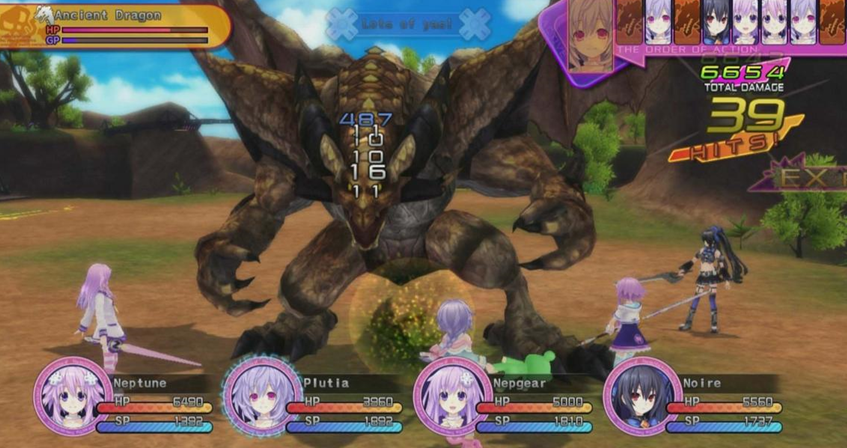
Conclusion
The characters, whilst being as fun and quirky as ever, are fewer in number this time around. There are a couple of very welcome new faces however old favourites such as IF, Compa and 5pb have been removed from the playable character roster in favour of focusing solely on the CPUs. You can unlock a plethora of humanoid bonus characters but only as pricey DLC, which brings us to the game’s surprisingly cheeky new design choice: an overdependence on downloadable content.
You see, Victory’s gameplay style is entirely dependent on whether or not you invest in the DLC. The game starts off tough and only gets harder much like the original Hyperdimension Neptunia, meaning you’ll need to rely on power-levelling, frequent weapon upgrades and charging up the game’s flashy new EXE Drive special attacks to get you through the frustrating boss fights. For the hardcore Dark Souls-loving masochists out there, this may be the game for you.
If, however, you prefer your games with a more casual, progressive flow then you may wish to consider investing in one or two of the ultimate weapons available from the PSN Store. For pennies each, you can pick up a weapon that’s so powerful that you’ll sail through to the final dungeon with ease, similar to the simpler gameplay of mk2. Kitting out your entire party with these super-weapons will see you pummelling the final boss into oblivion and working your way through many of the bonus arena fights too.
I might be hard on it at times, but both as a sequel and even as a standalone game, you’ll struggle to find a more enjoyable, rewarding, and (most of all) fun JRPG out there. You might have DLC forced down your throat and sadly the progression flow is better with it, which must be reflected in the game’s overall score, but Victory will keep you entertained from start to finish.
This is also the girls’ last PS3 outing, with the series jumping ship from here on to PS Vita in the form of quirky spin-offs, remakes, and remasters of the PS3 games. So, for now at least, Hyperdimension Neptunia Victory is a pleasing send-off for a solid series until the saga resumes on PS4. But will the later sequels be able to continue the magic? Only time will tell.
Joys
- Fun new characters
- Great, intricate story
- Fascinating world-building
Cons
- Game flow improved with paid DLC
- Some unvoiced scenes
